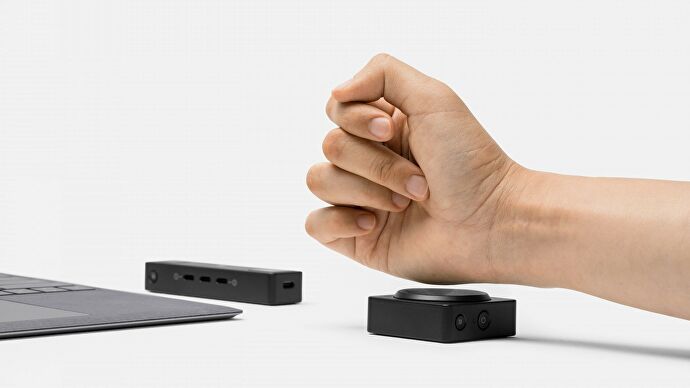Microsoft’s Adaptive Accessories are customizable peripherals with accessibility in mind

Microsoft have expanded their array of accessibility-focused PC hardware with the Adaptive Accessories range. Unveiled during yesterday’s Microsoft Ability Summitthe set comprises three devices – the Adaptive Mouse, the Adaptive Button, and the Adaptive Hub – that aim to make games and apps more usable for anyone, by allowing themselves to be customized with 3D-printed attachments.
Each Adaptive Button, for instance, can turn into a big D-pad, or a joystick controller, or just a pair of two chunky buttons. It all depends on the personalized attachment, and the Adaptive Button can be programmed with up to eight inputs at once, hence its ability to act as a directional input device. Or just an easy way to punch in different macro commands.
The Adaptive Mouse, meanwhile, is by itself just a small puck. But it’s built to easily slot into larger bodies or connect to other attachments and mounts, so that it can accommodate different grips or fit into specialized setups. The Adaptive Hub can tie everything together by wirelessly pairing with up to four Adaptive Buttons at a time, while also connecting up to three other devices via Bluetooth or USB-C. It also includes 3.5mm ports for existing assistive tech switches.
These Adaptive Accessories look much like a refinement of accessibility ideas Microsoft tried with the Xbox Adaptive Controller. That was and remains a great idea, emphasizing customization to allow for loads of custom inputs at once. However, the device itself was quite hefty, and users had to source third-party inputs (like Logitech’s Adaptive Gaming Kit) themselves.
The Adaptive Mouse, Adaptive Button, and Adaptive Hub seem to be more of an all-in-one set of tools, combining the inputs themselves with the customization potential that’s necessary for accommodating as many different physical needs as possible. It does all look pretty promising, especially coming from Microsoft, who’ve already done more than most in developing more accessible alternatives to conventional mice, keyboards, and gamepads – all of which some PC owners can have difficulty with.
No word yet on pricing yet, just a release window of autumn 2022.
Reference-www.rockpapershotgun.com